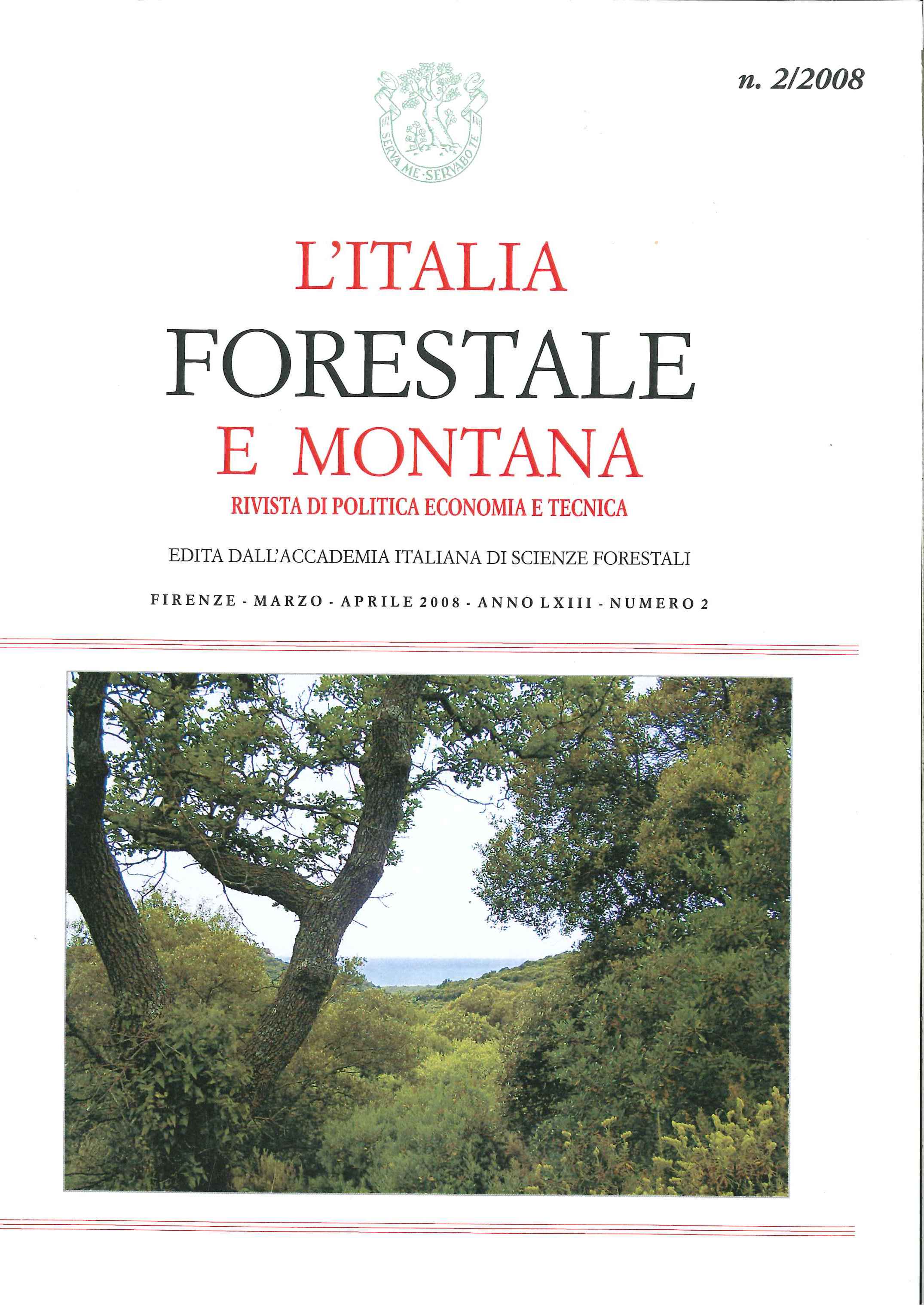Articles
Landuse variations in the Roglio Torrent hydrographic basin (Era Valley, Tuscany) in the latest five decades
Published 2008-04-23
Keywords
- Roglio torrent basin,
- Tuscany Region,
- landuse,
- climate
Copyright (c) 2008 Italian Journal of Forest and Mountain Environments

This work is licensed under a Creative Commons Attribution-NonCommercial 4.0 International License.
Abstract
The study of three temporal series (1954, 1976 and 2003) of aerial photos of the Era Valley (Tuscany) made itpossible to draw three landuse maps of the Roglio Torrent Basin at a 1:10000 scale. This was eventually reduced to one single sheet containing the 1954 and 1976 maps at a 1:50000 scale and the 2003 map at 1:40000 scale. Maps were digitalized in a GIS software, with which they were analysed both in terms of space and of time variations. In particular, the «seminativi» landuse class, which is the most frequent in the area, went constantly reducing from 1954 to 2003. moving from an original overall extension of 83,6 km2 to the 2003 67,6 km2. Most of this abandoned land experienced a progressive re-naturalization, becoming first «cespuglieti» and eventually «bosco misto». This latter passed from a 1954 occupation of 43,9 km2 to a 66,1 km2 in 2003. Urban and sub-urban areas, mostly present at low altitude, increased of 2,6 km2. The constant decrease of the «oliveti» (16,2 km2) is particularly relevant not only for economic implications, but also for the consequences on soil erosion that the abandonment of this agricultural practice might cause. Changes thus recorded have had consequences on the processes of hydro-erosion, even though the complexity of such processes on men-affected soils does not allow a certain prediction of their possible reaction to the changes of landuse in the latest decades. Climatic analysis in the Roglio T. basin shows that there is an overall increase in the hydrical deficit and a decrease of the surplus from the first decades of the XXI century to the present, with possible consequences on soil erosion processes.

